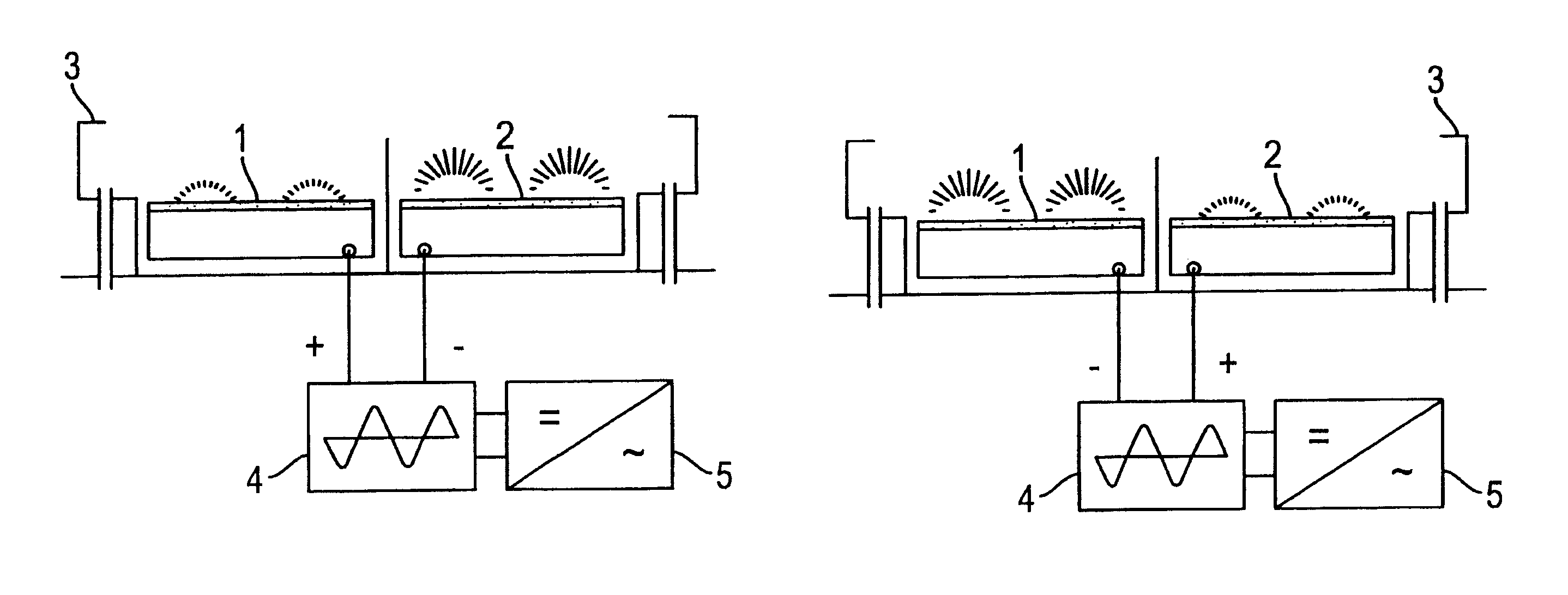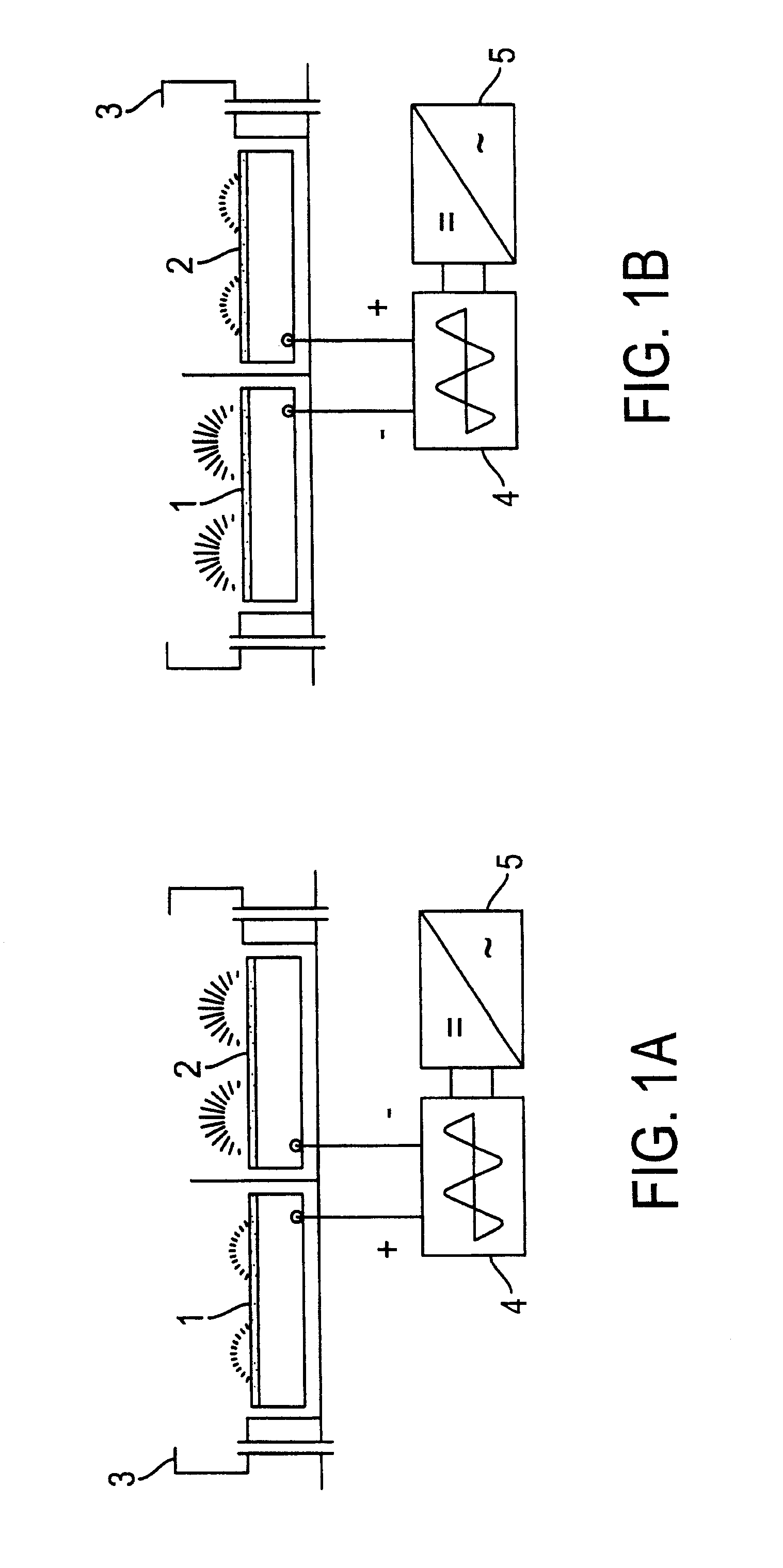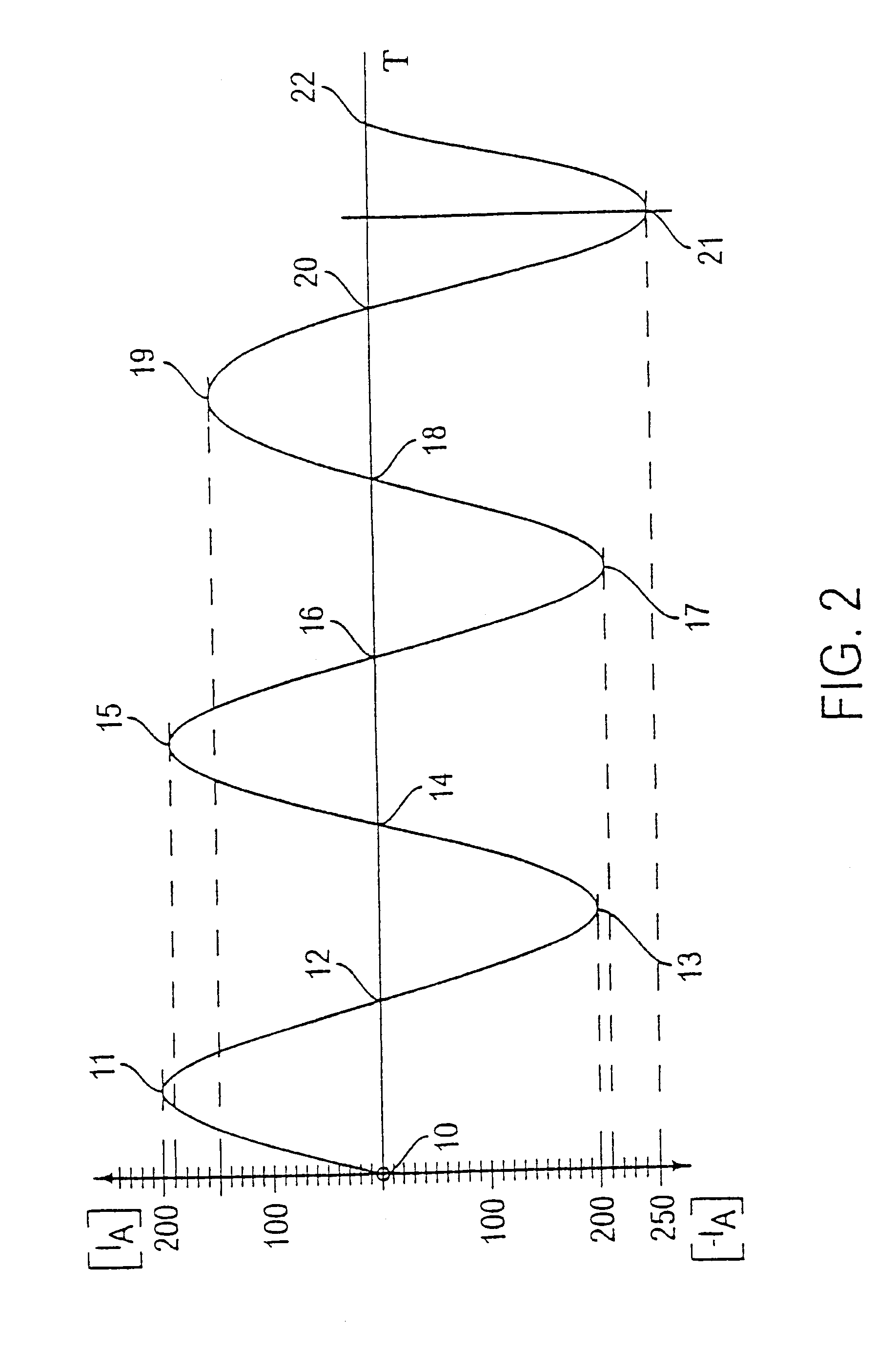Method for monitoring alternating current discharge on a double electrode and apparatus
a technology of alternating current and double electrodes, applied in the direction of electrical equipment, instruments, plasma techniques, etc., can solve the problems of frequent unnecessarily disruptive interruption of the energy supply of the discharge device, increased danger of forming an arc discharge on the respective target, and local overheating on the electrode surfa
- Summary
- Abstract
- Description
- Claims
- Application Information
AI Technical Summary
Benefits of technology
Problems solved by technology
Method used
Image
Examples
Embodiment Construction
The same double magnetron is shown in FIGS. 1a and 1b, in which a target 1 and a target 2 electrically form the double electrode. With respect to the additional embodiments, FIG. 1a represents the relationships for a first half-wave of the discharge and FIG. 1b represents the following half-wave within a period of the alternating current.
The targets 1 and 2 are arranged in a housing-like sheathing 3 and are shielded against one another. The targets 1 and 2 are attached to a switching unit 4 outside the sheathing 3 as well as outside the coating chamber. The switching unit realizes the pole reversal between cathodic and anodic potential. The switching unit 4 is connected electrically directly with a power supply unit 5.
The devices to record the actual discharge current, the discharge voltage, and the actual duration of the individual half-waves are not shown in greater detail. The measuring elements for the discharge current and discharge voltage are located in the power supply unit ...
PUM
 Login to View More
Login to View More Abstract
Description
Claims
Application Information
 Login to View More
Login to View More - R&D
- Intellectual Property
- Life Sciences
- Materials
- Tech Scout
- Unparalleled Data Quality
- Higher Quality Content
- 60% Fewer Hallucinations
Browse by: Latest US Patents, China's latest patents, Technical Efficacy Thesaurus, Application Domain, Technology Topic, Popular Technical Reports.
© 2025 PatSnap. All rights reserved.Legal|Privacy policy|Modern Slavery Act Transparency Statement|Sitemap|About US| Contact US: help@patsnap.com



